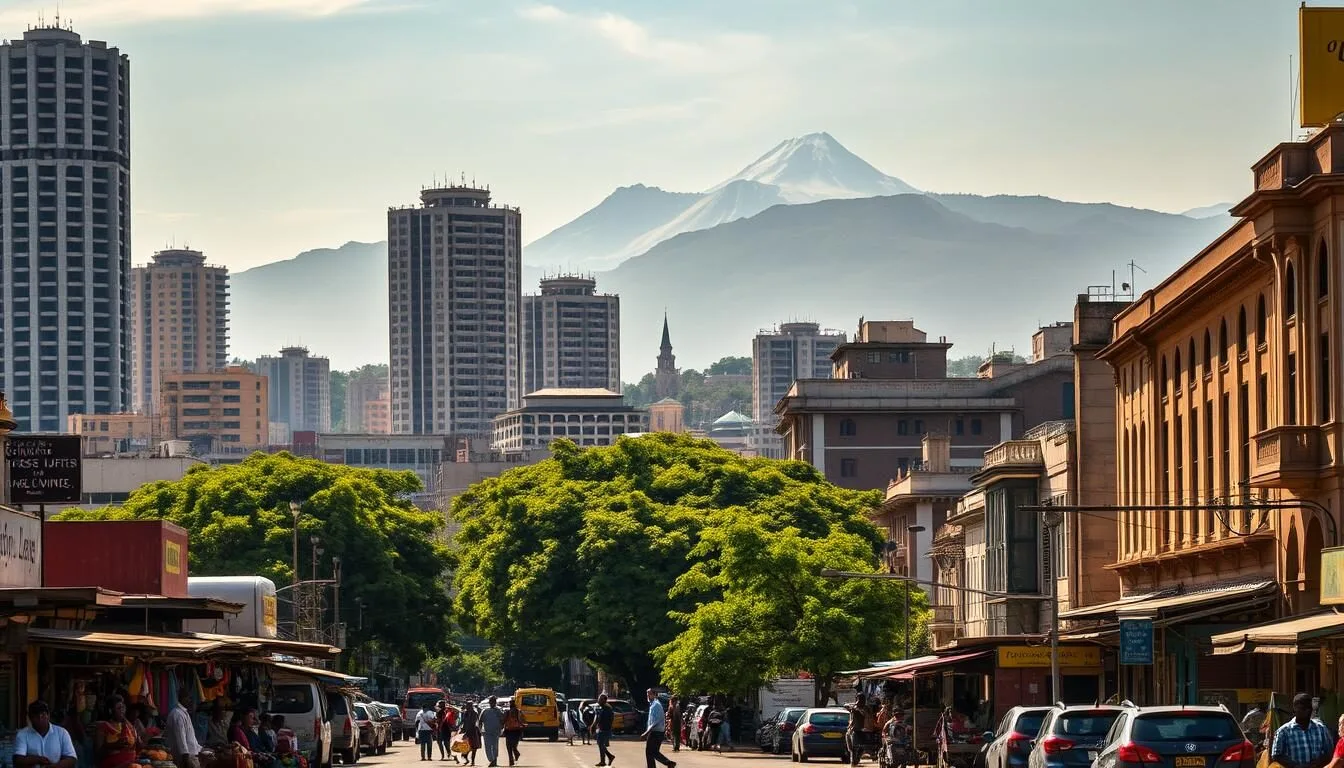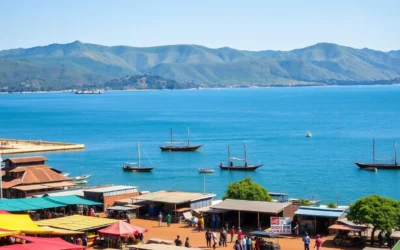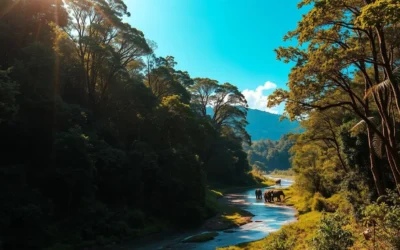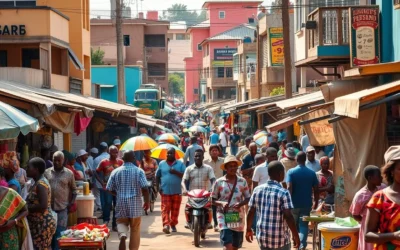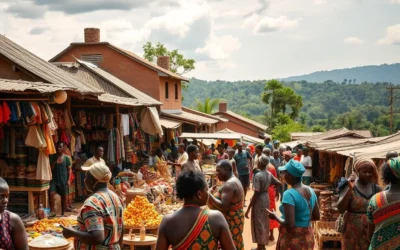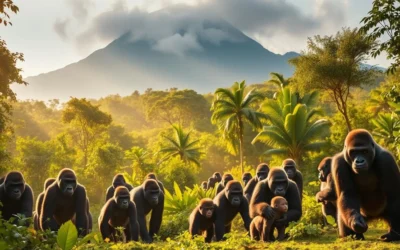✓ Accommodations✓ Flights✓ Rental Cars
Nestled in the northeastern part of the Democratic Republic of Congo, Bunia is a vibrant city that offers a unique blend of natural beauty and cultural experiences. As the capital of Ituri Province, it serves as a gateway to explore the eastern region, with its lush landscapes and diverse communities.
You can explore the local culture and experience the warm hospitality of the Congolese people. With its rich history as a trading hub and modern cultural center, Bunia is a destination worth visiting. From scenic lake trips to cultural performances, there’s a lot to discover in this fascinating city.
Discovering Bunia: Gateway to Eastern Congo
As you step into Bunia, you’re not just entering a city; you’re unlocking the gateway to the vibrant culture of Eastern Congo. Located in the heart of the Ituri Province, Bunia is a city that seamlessly blends tradition with modernity, making it an ideal starting point for your adventure in the Democratic Republic of Congo.

Geographical Location and Significance
Bunia is situated in the northeastern part of the Democratic Republic of Congo, serving as the capital of the Ituri Province. Its strategic location near Lake Albert and the border with Uganda makes it a significant hub for trade and cultural exchange. The city’s geography is characterized by a mix of savannas and hills, providing a unique landscape that supports a variety of flora and fauna.
The significance of Bunia extends beyond its geography; it is a melting pot of cultures, with various ethnic groups coexisting and contributing to the city’s rich cultural tapestry. As part of the Democratic Republic of Congo, Bunia reflects the country’s diverse heritage, making it a fascinating place to explore.
Historical Background of Bunia
Bunia’s history is as diverse as its culture. The city has been influenced by various colonial and regional powers, leaving behind a legacy that is evident in its architecture, language, and traditions. Understanding Bunia’s historical background provides insight into the city’s current identity and its role within the Democratic Republic of Congo.
- Explore the remnants of colonial architecture that dot the cityscape.
- Learn about the historical events that have shaped Bunia’s identity.
- Discover how the city’s past continues to influence its present.
Cultural Diversity in Bunia
Bunia is renowned for its cultural diversity, with numerous ethnic groups such as the Hema, Lendu, and Alur living together in harmony. This diversity is expressed through a variety of languages, traditional practices, arts, and celebrations that take place throughout the city. The blending of traditional customs with modern influences creates a dynamic cultural environment that is unique to Bunia.
Some of the cultural highlights include:
- Discovering the rich tapestry of cultures that coexist in Bunia.
- Learning how cultural diversity is expressed through various forms of art and celebration.
- Understanding the contribution of different communities to Bunia’s identity within the Democratic Republic of Congo.
By experiencing Bunia’s cultural diversity, you gain a deeper appreciation for the city’s role as a cultural hub in the region, reflecting the broader ethnic mosaic of the Democratic Republic of Congo.
When to Visit Bunia: Seasons and Climate
Understanding the climate and seasonal variations in Bunia is crucial for planning your trip to this vibrant city in the Democratic Republic of Congo. Bunia’s climate is characterized by two main seasons: the dry season and the rainy season, each offering unique experiences and activities.
Dry Season Activities
The dry season, which spans from June to August, is considered the best time to visit Bunia. The dry conditions make it ideal for outdoor activities such as hiking, visiting local markets, and exploring the surrounding landscapes. During this period, the weather is generally pleasant, with clear skies and moderate temperatures.
You can enjoy:
- Visiting the local artisanal market to purchase traditional crafts and souvenirs.
- Exploring the natural beauty of the region through hiking and trekking.
- Participating in cultural festivals that showcase the rich heritage of the Democratic Republic of Congo.
Rainy Season Experiences
The rainy season, which lasts from September to May, brings a different charm to Bunia. The lush green landscapes and full water bodies create a picturesque scenery. Although some outdoor activities might be challenging due to the rain, the season offers its own unique experiences, such as witnessing the local agricultural practices and enjoying the cooler temperatures.
Some highlights include:
- Observing the local farming practices and harvesting activities.
- Enjoying the cooler temperatures and the serene environment.
- Visiting the nearby waterfalls and enjoying the scenic views.
Cultural Festivals and Events Calendar
Bunia hosts a variety of cultural festivals and events throughout the year, reflecting the city’s rich cultural diversity. These events are an excellent way to experience the local culture, interact with the community, and understand the traditions of the Democratic Republic of Congo.
| Month | Event/Festival | Description |
|---|---|---|
| January | New Year Celebrations | Community gatherings and traditional dances. |
| March | Harvest Festival | Celebration of the harvest season with local agricultural practices. |
| December | Christmas Celebrations | Religious ceremonies and community events. |
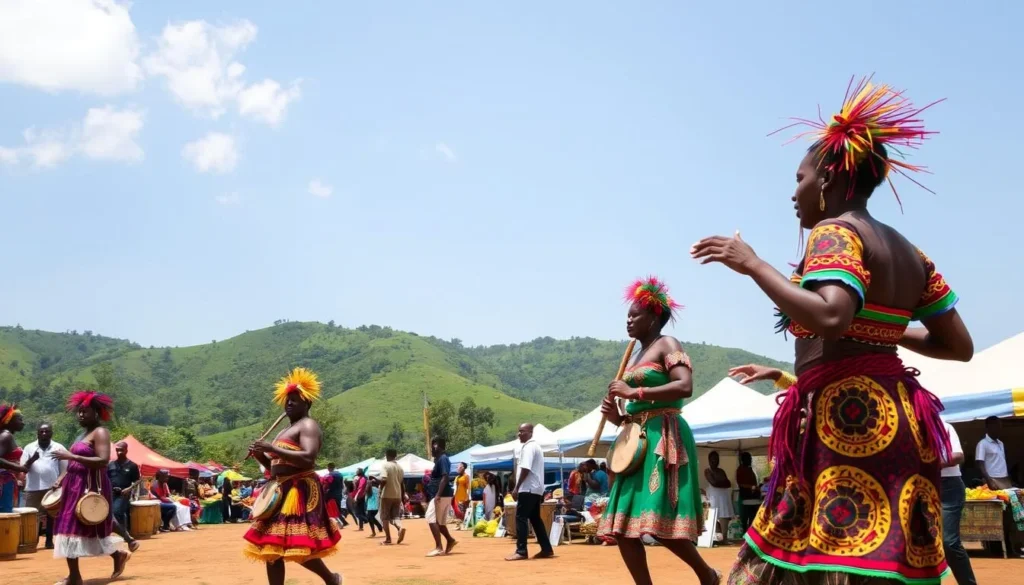
By understanding the seasons and climate in Bunia, you can plan your visit to coincide with the events and activities that interest you the most, ensuring a memorable and enriching experience in this vibrant city of the Democratic Republic of Congo.
Take a Scenic Boat Trip on Lake Albert
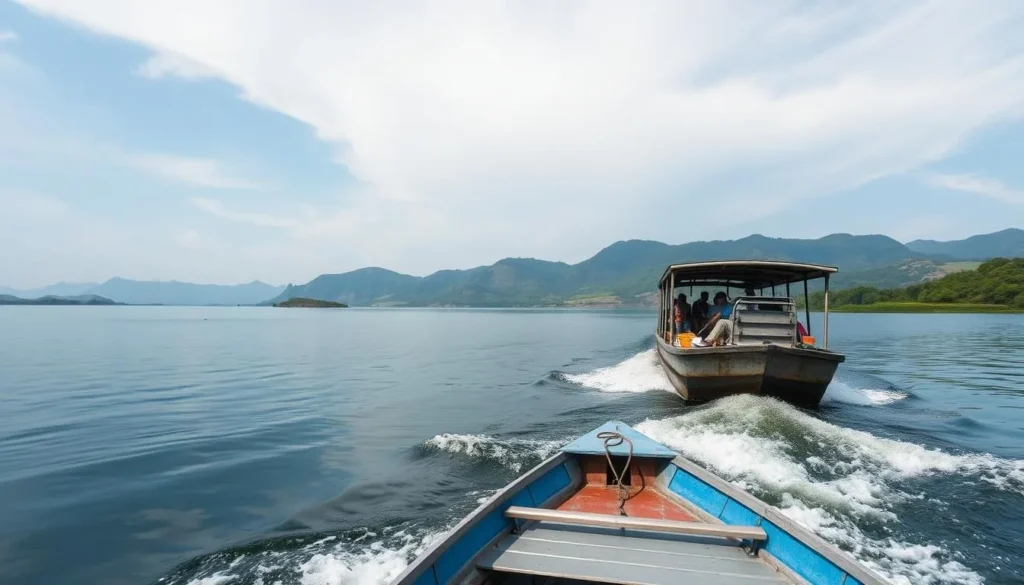
Embark on a serene journey across Lake Albert, where the beauty of the Democratic Republic of Congo unfolds. As you cruise through the tranquil waters, you’ll be surrounded by the stunning landscapes and diverse wildlife that call this region home.
Fishing Village Excursions
Visit the local fishing villages along the shores of Lake Albert, where you can experience the traditional way of life of the communities living here. The democratic republic is home to numerous ethnic groups, each with their unique culture and customs. You’ll have the opportunity to interact with the friendly locals, learn about their fishing practices, and perhaps even participate in a traditional fishing activity.
Sunrise and Sunset Cruises
Witness the breathtaking beauty of the sunrise or sunset over Lake Albert. As the day begins or comes to a close, the sky is painted with hues of orange, pink, and purple, creating a truly unforgettable experience. The republic congo offers a unique blend of natural beauty and cultural heritage, making it an ideal destination for those seeking an authentic African experience.
Wildlife Spotting on the Lake
Lake Albert is renowned for its rich biodiversity, with a wide variety of species inhabiting its waters and surrounding wetlands. Keep an eye out for hippos, crocodiles, and numerous bird species, including migratory birds that visit the lake during certain times of the year. The democratic republic congo is a haven for nature lovers and wildlife enthusiasts, offering a chance to observe these incredible creatures in their natural habitat.
As you explore Lake Albert, you’ll gain a deeper understanding of the ecological importance of this region and its role in supporting the local communities. The lake’s diverse ecosystem is a testament to the democratic republic‘s commitment to preserving its natural heritage.
Explore Mount Hoyo Forest and Waterfalls

The lush expanse of Mount Hoyo Forest and its majestic waterfalls present a unique opportunity to explore one of the Democratic Republic of Congo’s most pristine natural wonders. As you venture into this enchanting region, you’ll discover a rich tapestry of biodiversity that thrives within the Mount Hoyo ecosystem, representing the rich natural heritage of the Democratic Republic of Congo.
Cave Exploration Adventures
One of the most thrilling experiences in Mount Hoyo Forest is exploring its caves. These natural formations offer a glimpse into the geological history of the area and provide a habitat for unique species that have adapted to the dark, cool environments within. As you navigate through the caves, you’ll have the opportunity to observe formations that have taken centuries to develop, showcasing the slow and patient work of geological processes.
Guided tours are available for those interested in cave exploration, ensuring a safe and informative experience. Knowledgeable guides will lead you through the caves, pointing out interesting formations and sharing insights into the local ecosystem.
Hiking Trails and Difficulty Levels
Mount Hoyo Forest offers a variety of hiking trails that cater to different skill levels, from easy strolls to more challenging hikes. Whether you’re a seasoned hiker or just looking for a leisurely walk, there’s a trail that’s right for you. The trails wind through the forest, offering glimpses of the local flora and fauna, including endemic plant species that are found nowhere else in the world.
As you hike, you’ll have the chance to experience the diverse landscapes within Mount Hoyo, from dense forest to open clearings. The varying difficulty levels of the trails ensure that you can choose an adventure that suits your preferences and abilities.
Indigenous Flora and Fauna
The Mount Hoyo ecosystem is home to a wide range of indigenous flora and fauna, making it a fascinating destination for nature lovers. The forest is characterized by its rich biodiversity, with numerous species of plants and animals that contribute to the health and sustainability of this important natural area.
From the colorful bird species that fill the forest canopy to the small mammals and reptiles that inhabit the underbrush, there’s always something new to discover in Mount Hoyo Forest. The area’s unique conditions have allowed for the development of medicinal plants used by local communities, highlighting the importance of preserving this natural heritage.
Visit the Local Bunia Artisanal Market
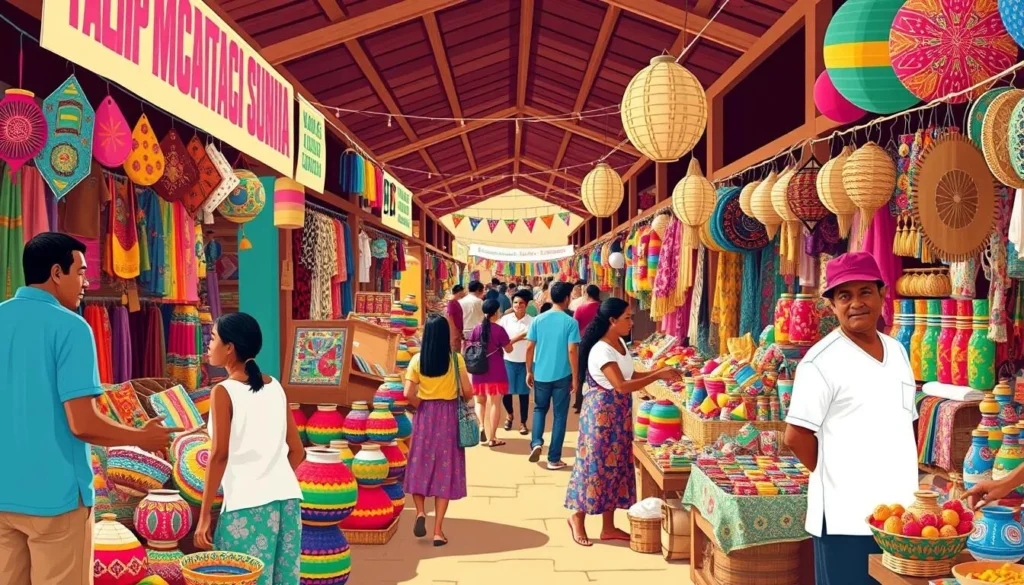
As you step into the vibrant Bunia artisanal market, you’re immediately immersed in a world of color, sound, and craftsmanship. The market is a treasure trove of local handicrafts, offering a glimpse into the rich cultural heritage of the Democratic Republic of Congo. Here, you can discover unique souvenirs, taste local delicacies, and interact with the skilled artisans who bring the market to life.
Traditional Crafts and Souvenirs
The Bunia artisanal market is renowned for its exquisite traditional crafts, including woodcarvings, basket weaving, and intricate jewelry making. You can find a variety of unique souvenirs, such as hand-carved masks, beautifully crafted drums, and colorful textiles. These items not only make great mementos but also serve as a testament to the region’s rich cultural heritage.
Some of the traditional crafts you can expect to find include:
- Hand-carved wooden figurines and masks
- Intricately woven baskets and mats
- Beautifully crafted jewelry made from local materials
- Colorful textiles and clothing with traditional designs
Local Food and Produce
In addition to traditional crafts, the Bunia artisanal market is also a great place to sample local food and produce. You can find a variety of fresh fruits, vegetables, and traditional delicacies, such as:
- Fresh produce, including exotic fruits and vegetables
- Traditional Congolese dishes, such as pondu and liboke
- Local honey and other artisanal food products
Be sure to try some of the local cuisine and drinks, which offer a unique taste of the region’s culinary traditions.
Interacting with Local Artisans
One of the highlights of visiting the Bunia artisanal market is the opportunity to interact with the local artisans themselves. Many of the vendors are happy to share their stories, demonstrate their craft, and engage in conversation. You can learn about the techniques and materials used in their work, as well as the cultural significance of the items they create.
By interacting with the artisans, you can gain a deeper understanding of the Democratic Republic of Congo’s rich cultural heritage and take home not only unique souvenirs but also unforgettable memories of the people and their stories.
Experience Traditional Ituri Cultural Dance Performances
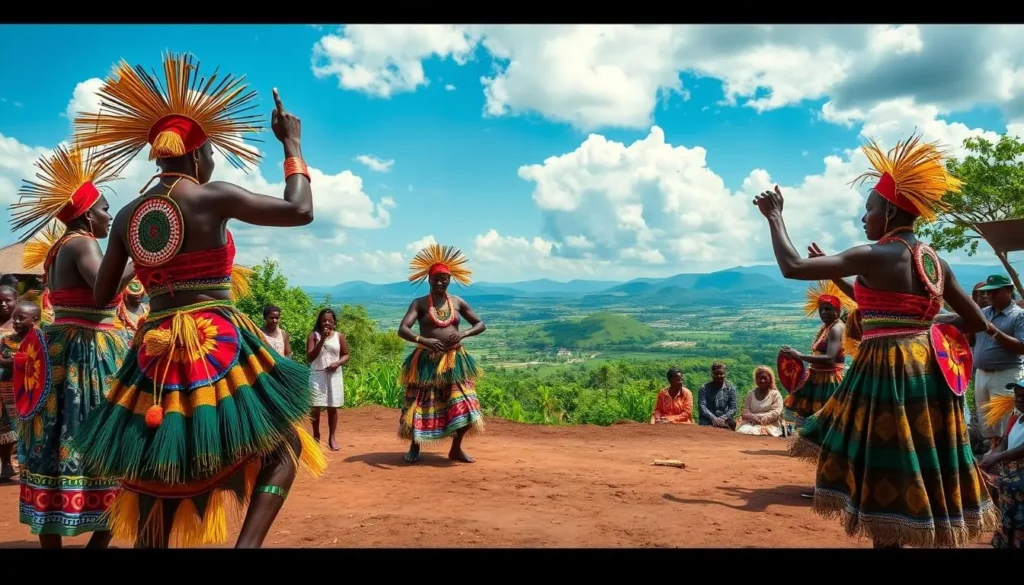
Immerse yourself in the vibrant cultural heritage of Bunia, Democratic Republic of the Congo, through its traditional Ituri cultural dance performances. These dances are not just a form of entertainment but a way to understand the history, myths, and daily life of the people in the Ituri region.
The Ituri region is known for its rich cultural diversity, with various ethnic groups such as the Hema and Lendu. Each group has its unique traditional dances, which play a significant role in their cultural practices.
Hema and Lendu Traditional Dances
The Hema and Lendu people have distinct traditional dances that are performed during various occasions, including festivals, ceremonies, and special events. The Hema dances are known for their graceful movements, while the Lendu dances are characterized by energetic and dynamic steps.
These traditional dances are not only a means of expression but also a way to preserve cultural heritage. By participating in or watching these dances, you can gain a deeper understanding of the local culture and its significance.
Drum Circles and Musical Traditions
Drum circles are an integral part of traditional Ituri cultural dance performances. The rhythmic beats of the drums accompany the dances, creating an immersive experience. The musical traditions in the Ituri region are rich and varied, with different ethnic groups having their unique instruments and musical styles.
The drum circles and musical performances are not just limited to dance events but are also an essential part of community gatherings and celebrations.
Where to See Authentic Performances
To experience authentic traditional Ituri cultural dance performances, you can visit local community centers, cultural festivals, and special events. These venues offer a glimpse into the rich cultural heritage of the region.
When attending these performances, it’s essential to be respectful of local customs and traditions. Understanding the etiquette and guidelines for photography and participation will enhance your experience and show appreciation for the local culture.
By experiencing traditional Ituri cultural dance performances, you will not only be entertained but also gain a deeper understanding of the Democratic Republic of Congo’s cultural wealth. Make sure to visit these cultural events during your place in Bunia to have a memorable experience.
Spend a Day at Parc Naturel de la Rwindi
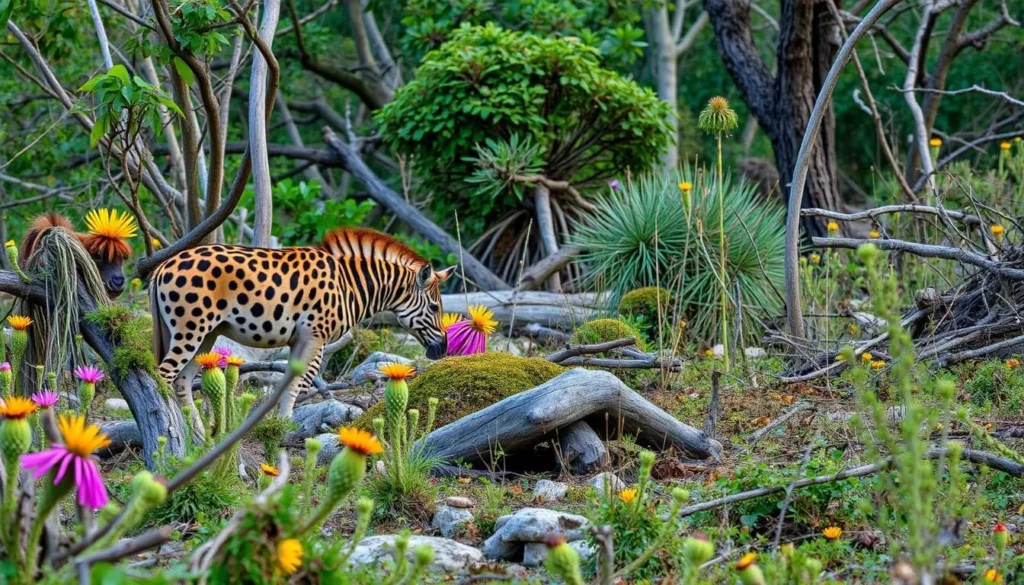
With its rich biodiversity and stunning landscapes, Parc Naturel de la Rwindi is a hidden gem in the Democratic Republic of Congo waiting to be discovered. As you explore this incredible national park, you’ll have the opportunity to witness a wide range of wildlife in their natural habitats.
Wildlife Viewing Opportunities
Parc Naturel de la Rwindi is renowned for its diverse wildlife, including elephants, lions, and various antelope species. The park’s diverse ecosystems, from savannas to forests, support a rich array of fauna, making it a paradise for wildlife enthusiasts. As you venture through the park, keep your eyes peeled for the many species that call this place home.
Guided Safari Options
To make the most of your visit to Parc Naturel de la Rwindi, consider joining a guided safari tour. Experienced guides will lead you through the park’s most spectacular areas, providing insights into the local wildlife and ecosystems. These tours are not only exciting but also educational, offering a deeper understanding of the Democratic Republic of Congo’s natural heritage.
Conservation Efforts and Education
Parc Naturel de la Rwindi is committed to conservation and education. The park implements various strategies to protect its ecosystems, including anti-poaching efforts and sustainable resource management. Local communities are also involved in conservation initiatives, with opportunities for employment and education. By visiting the park, you contribute to these efforts and help preserve the natural heritage of the Democratic Republic of Congo.
As you plan your day at Parc Naturel de la Rwindi, remember that your visit supports broader conservation goals. The park’s education programs aim to build awareness and support for environmental protection both locally and internationally. By engaging with these initiatives, you can play a role in protecting this incredible natural resource for future generations.
Discover Local History at the Ituri Museum
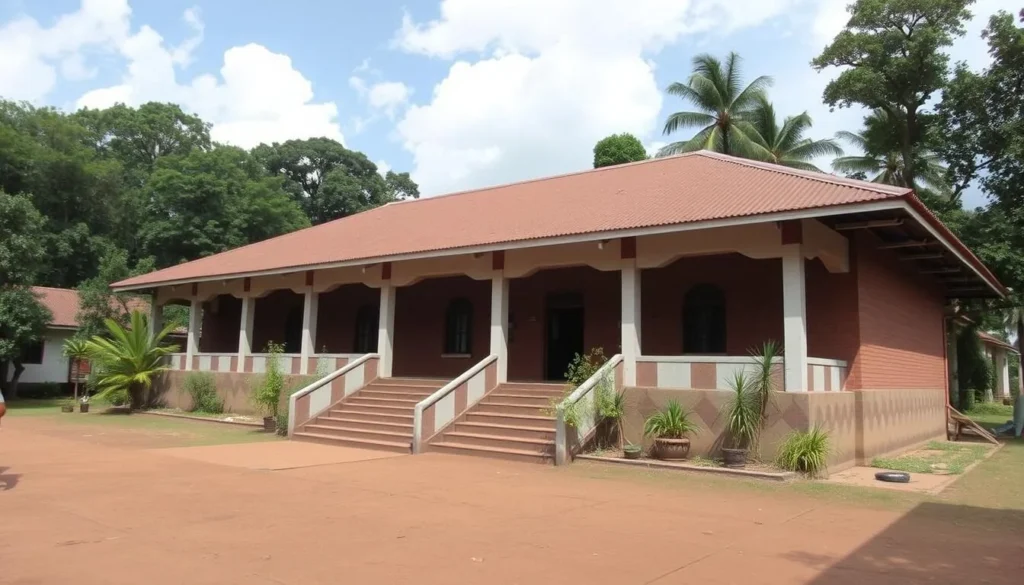
Bunia’s Ituri Museum is a must-visit destination for anyone interested in exploring the rich cultural heritage and historical narrative of the Democratic Republic of Congo. As you explore the museum, you’ll gain a deeper understanding of the region’s complex history, cultural practices, and the significance of various artifacts on display.
Anthropological Exhibits
The Ituri Museum houses an impressive collection of anthropological exhibits that shed light on the lives and traditions of various ethnic groups within the Democratic Republic of Congo. You can discover the museum’s collection of significant cultural artifacts that tell the story of artistic and spiritual traditions in the region. These exhibits provide valuable insights into the symbolic meanings embedded in ceremonial masks, sculptures, and ritual objects from different ethnic groups.
By exploring these exhibits, you’ll learn about the cultural practices and traditions that have been passed down through generations, offering a glimpse into the rich culture of the Democratic Republic.
Colonial History Displays
The museum’s colonial history displays offer a poignant look at the region’s past, highlighting the impact of colonialism on the local population and the broader Democratic Republic of Congo. These exhibits provide a nuanced understanding of the historical context and the ways in which colonialism shaped the region’s development.
As you explore these displays, you’ll gain a deeper appreciation for the complex history of the Republic Congo and its people, understanding the contexts in which historical events unfolded.
Cultural Artifacts and Their Significance
The Ituri Museum is home to a vast array of cultural artifacts, including utilitarian items like tools, weapons, and household goods, which reflect both practical innovation and aesthetic values in traditional societies. You’ll have the opportunity to explore how these artifacts were originally used and how their meanings have evolved over time in the Democratic Republic.
The museum’s work to document the stories behind each artifact is crucial in preserving not just the physical objects but the cultural knowledge and practices they represent. By learning about these artifacts, you’ll gain a richer understanding of the Democratic Republic of Congo’s cultural heritage.
Visiting the Ituri Museum is an enriching experience that allows you to connect with the history and culture of the Republic Congo. With its comprehensive exhibits and dedication to preserving cultural heritage, the museum is a valuable resource for anyone interested in the region.
Bunia, Democratic Republic of the Congo: Best Things to Do – Top Picks
In Bunia, you’ll find a unique blend of culture, history, and outdoor activities that cater to visitors of all ages, making it a surprisingly family-friendly destination in the Democratic Republic of the Congo.
Adventure Activities for Thrill Seekers
For those seeking adventure, Bunia offers a range of exciting activities. You can explore the surrounding countryside on a guided hike or trek, taking in the stunning natural beauty of the region. Alternatively, visit the nearby Lake Albert for a thrilling boat trip or fishing excursion.
Some popular adventure activities include:
- Hiking and trekking in the surrounding hills and mountains
- Boat trips and fishing on Lake Albert
- Visiting local villages and experiencing rural Congolese life
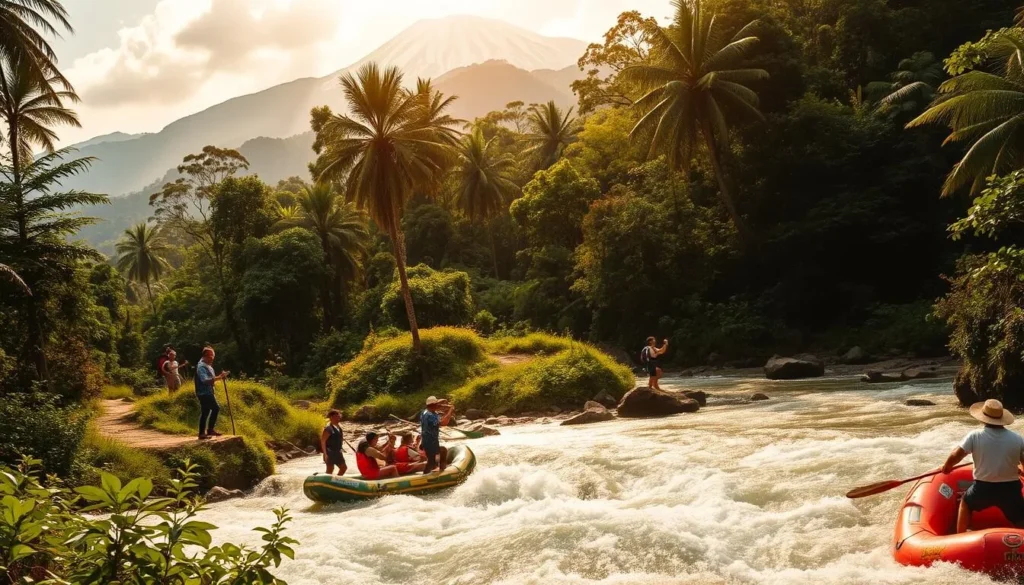
Cultural Experiences for History Buffs
Bunia is rich in cultural heritage, with a complex history that is reflected in its museums, historical sites, and cultural events. You can visit the Ituri Museum to learn about the region’s anthropological and colonial history, or attend a traditional dance performance to experience the local culture firsthand.
| Cultural Experience | Description |
|---|---|
| Ituri Museum | Explore the region’s anthropological and colonial history |
| Traditional Dance Performance | Experience the local culture through music and dance |
Family-Friendly Attractions
Bunia is a great destination for families, with a range of attractions and activities that are suitable for all ages. You can visit the local community gardens and playgrounds, where children can burn off energy and adults can relax.
Some family-friendly attractions include:
- Community gardens and playgrounds
- Local markets and shopping areas
- Guided tours and cultural events
When planning your trip to Bunia, consider staying at family-friendly accommodations and dining at local restaurants that cater to families. With a little planning, you can create a memorable and enjoyable family experience in this unique and fascinating destination.
Enjoy a Village Tour with Local Coffee Farmers
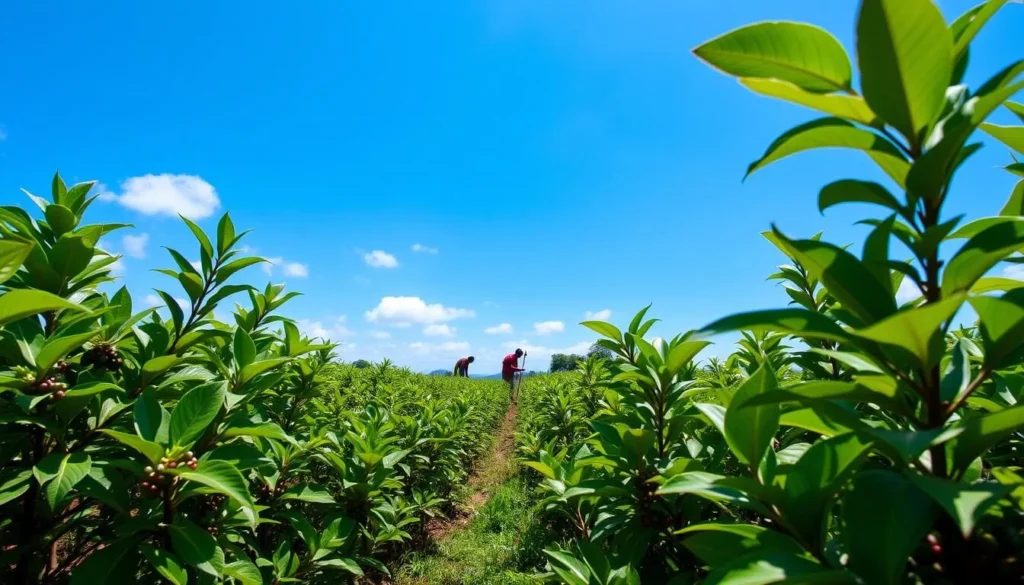
The villages surrounding Bunia are home to thriving coffee cooperatives, where you can experience the journey of coffee from bean to cup. By participating in a village tour, you’ll have the opportunity to engage with local coffee farmers, learn about their production processes, and understand the significance of coffee in the Democratic Republic of Congo.
Coffee Production Process
Coffee production in the Democratic Republic of Congo involves meticulous care from planting to harvesting. Local farmers employ traditional methods, often passed down through generations, to ensure high-quality coffee beans. You’ll learn about the different stages of coffee production, from nursery management to drying and processing.
The coffee production process is labor-intensive and requires a deep understanding of the land and climate. Farmers in the region have developed sustainable practices that not only improve the quality of their coffee but also contribute to the well-being of their communities.
Tasting Sessions and Buying Options
After learning about the coffee production process, you’ll have the chance to taste some of the finest coffee in the region. Local farmers take pride in their coffee, and tasting sessions provide an opportunity to appreciate the flavors and aromas of Congolese coffee. You can also purchase coffee directly from the farmers, supporting the local economy and taking home a unique souvenir.
Tasting sessions are often accompanied by explanations of the roasting and brewing techniques used by local farmers. This is a great opportunity to learn about the different flavor profiles and how they are achieved.
Supporting Sustainable Agriculture
Coffee farming cooperatives around Bunia are working to implement sustainable agricultural practices that protect the environment in the Democratic Republic of the Congo. You’ll learn about organic growing methods that minimize chemical inputs while maintaining crop health and productivity.
Agroforestry systems that integrate coffee plants with native tree species are also being adopted, creating habitat for wildlife while providing shade for optimal coffee growth. By supporting sustainable coffee production, you’re contributing to community development through income generation, knowledge sharing, and infrastructure improvements.
Certification programs verify sustainable practices, and your consumer choices can support ongoing environmental stewardship in the Democratic Republic of the Congo. By choosing to buy coffee from certified farms, you’re promoting a more sustainable and equitable coffee industry.
Watch a Football Match at Stade Amani
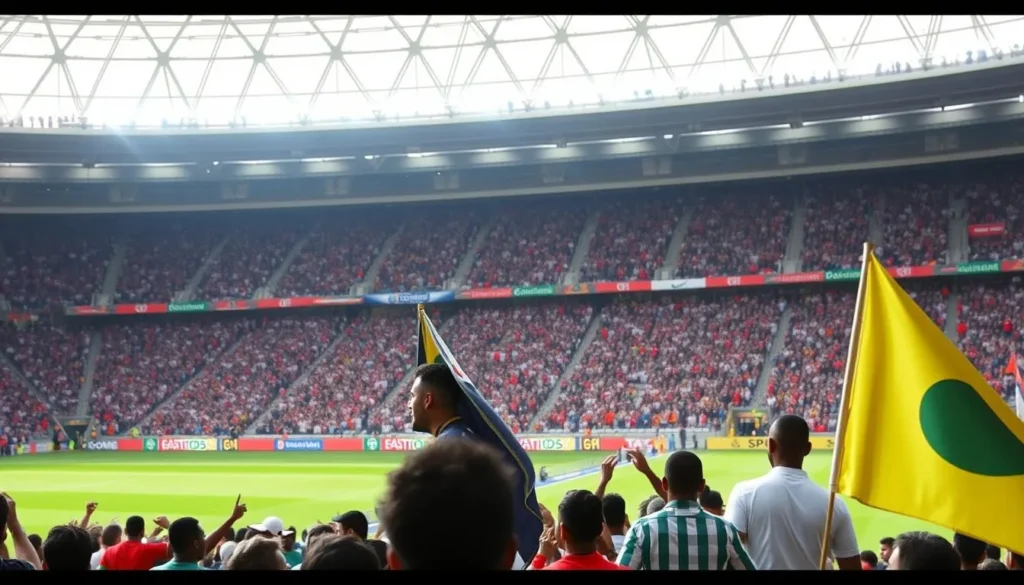
For an unforgettable day out, head to Stade Amani to watch a football match. Stade Amani is a premier sports venue in Bunia, Democratic Republic of Congo, known for hosting exciting football events that showcase local talent and passion.
Local Teams and Rivalries
The football matches at Stade Amani feature local teams with intense rivalries, creating an electrifying atmosphere. The teams have a strong following, and the matches often reflect the community’s spirit and pride. You will witness the passion and energy of the fans as they cheer for their favorite teams.
The local football scene is vibrant, with teams competing fiercely, and the stadium provides an excellent setting to experience this firsthand. The rivalries are not just about the game; they represent community pride and cultural identity.
Match Day Experience
On a match day, Stade Amani comes alive with fans gathering to support their teams. You will be surrounded by the electric atmosphere as the crowd cheers and chants throughout the game. The stadium’s facilities are designed to accommodate a large audience, ensuring that everyone has a great view of the action on the field.
The experience is not just about the football; it’s about immersing yourself in the local culture and enjoying the community’s enthusiasm. Whether you’re a football enthusiast or just looking for a unique experience, a match at Stade Amani is an event not to be missed.
Ticket Information and Best Seating
Securing tickets for a football match at Stade Amani is relatively straightforward. You can purchase tickets at the stadium’s ticket office or through authorized vendors. It’s advisable to plan ahead and buy tickets in advance, especially for popular matches.
The stadium offers various seating options, including covered areas that provide shade and sections known for their lively atmosphere. Understanding the different seating sections and their advantages can help you choose the best spot for your budget and desired experience.
When planning your visit to Stade Amani, consider arriving early to avoid crowds and ensure a smooth entry. The stadium’s staff are available to assist with any needs, including accessibility considerations for visitors with mobility challenges.
Hike to the Hilltop Views Above Bunia
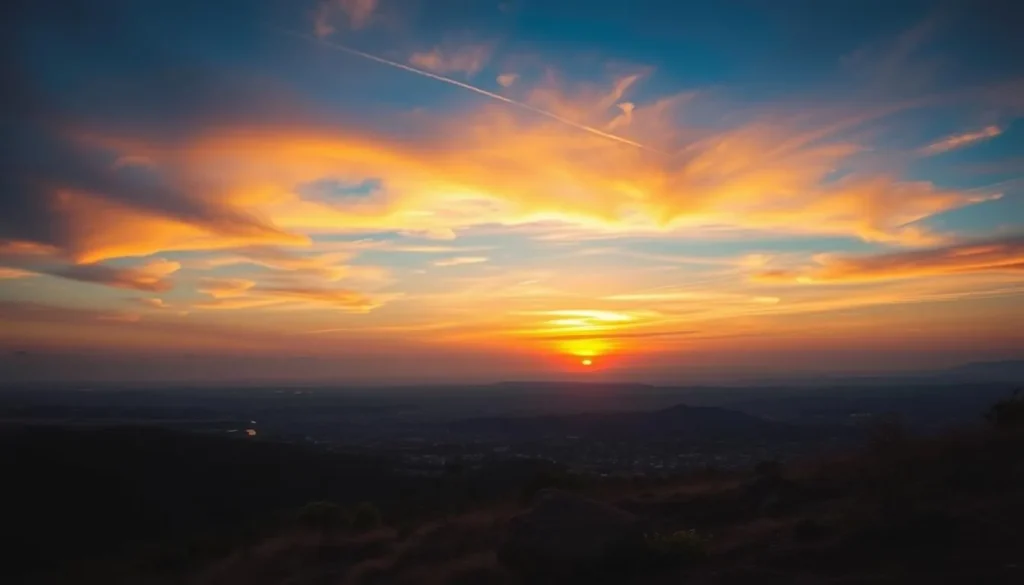
As you explore Bunia, the capital of Ituri Province in the Democratic Republic of the Congo, consider hiking to the hilltop views above the city for a breathtaking experience. The hills surrounding Bunia offer a unique blend of natural beauty and panoramic views of the city.
Popular Trails and Viewpoints
The hills around Bunia have several hiking trails that cater to different skill levels. One of the most popular trails leads to a viewpoint that overlooks the city and Lake Albert. The trail is moderately difficult and is approximately 5 kilometers long. Along the way, hikers can enjoy the local flora and fauna, including various bird species and lush vegetation.
The viewpoint at the top offers stunning vistas of Bunia and the surrounding landscape. On a clear day, you can see for miles in every direction, taking in the beauty of the Democratic Republic of Congo.
Photography Opportunities
The hilltop views above Bunia are a photographer’s paradise. The combination of natural beauty, with the cityscape below, creates a unique and captivating scene. The best times for photography are during the early morning and late afternoon when the light is soft and golden.
Capturing the sunrise or sunset from these viewpoints can result in truly memorable photographs. The changing colors of the sky, coupled with the landscape, make for a compelling image.
Safety Tips and Guide Recommendations
When hiking to the hilltop views above Bunia, safety should be your top priority. It’s essential to wear appropriate footwear, bring sufficient water, and protect yourself from the sun. Recognizing the signs of approaching storms is also crucial, especially when hiking on exposed ridgelines.
Hiring a local guide can significantly enhance your hiking experience. Guides are knowledgeable about the safest routes, points of interest, and can provide insights into the local environment. They can also assist with navigating the trails and ensuring that your experience is both enjoyable and safe.
For a safe and enjoyable hike, consider the following tips:
* Wear sturdy hiking boots or shoes.
* Bring enough water and snacks.
* Protect yourself from the sun with hats, sunglasses, and sunscreen.
* Be aware of the weather and signs of changing conditions.
* Hire a local guide for the best experience.
Participate in Community Festivals and Ceremonies
Participating in community festivals and ceremonies in Bunia offers a unique glimpse into the local culture. The Democratic Republic of the Congo is known for its rich cultural heritage, and Bunia is no exception. By engaging with the local community during these events, you can foster meaningful connections and create lasting memories.
Seasonal Harvest Celebrations
Seasonal harvest celebrations are an integral part of life in Bunia. These events mark the end of the harvest season and are characterized by traditional dances, music, and feasting. The community comes together to give thanks for the bounty of the land and to celebrate the hard work that has gone into harvesting the crops.
Traditional dances play a significant role in these celebrations, with participants dressing in their finest attire and performing intricate routines. You can also expect an abundance of local cuisine, including dishes made from freshly harvested produce.
Religious Ceremonies and Processions
Bunia is home to a diverse population with various religious affiliations. As a result, the city hosts numerous religious ceremonies and processions throughout the year. These events provide a unique opportunity to witness the local culture and experience the community’s spiritual practices.
From solemn processions to vibrant celebrations, these events showcase the rich tapestry of religious traditions in Bunia. You can observe the community coming together to mark important religious holidays and participate in time-honored rituals.
Etiquette for Foreign Visitors
When participating in community festivals and ceremonies in Bunia, it’s essential to be mindful of local customs and etiquette. As a foreign visitor, you can demonstrate respect by dressing modestly and following the lead of the local community.
Some key considerations include:
- Greeting locals with a handshake or a respectful bow
- Dressing conservatively for formal ceremonies
- Avoiding sensitive topics or behaviors that may be considered offensive
- Participating in events with an open mind and a willingness to learn
By being respectful and considerate, you can contribute positively to the community experience and foster meaningful connections with the people of Bunia.
Day Trips from Bunia: Exploring the Region
As you explore the vibrant city of Bunia, you’ll discover that the surrounding region is just as captivating, offering a range of exciting day trip options. From wildlife safaris to cultural excursions, there’s something for every interest and adventure level.
Garamba National Park Wildlife Safari
Garamba National Park is a must-visit destination for wildlife enthusiasts. Located within a few hours’ drive from Bunia, the park is home to a diverse array of wildlife, including elephants, giraffes, and lions. Garamba National Park tours offer a unique opportunity to witness these animals in their natural habitat.
To plan your visit, it’s essential to understand the park’s rules and regulations, as well as the best times for viewing wildlife. Guides are available to lead wildlife safaris, ensuring a safe and informative experience.
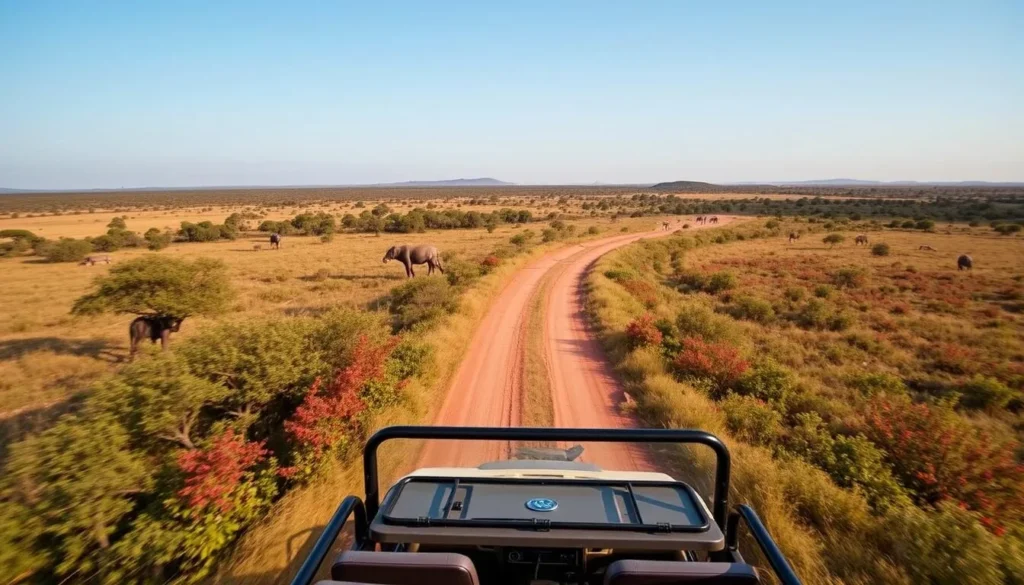
Rwenzori Mountains Trekking Adventures
For those seeking adventure, the Rwenzori Mountains trekking from Bunia is an unforgettable experience. The Rwenzori Mountains offer some of the most spectacular trekking routes in Africa, with breathtaking scenery and diverse flora and fauna.
Trekking in the Rwenzori Mountains requires a good level of physical fitness, and guides are recommended to ensure a safe and enjoyable journey. The trek offers a chance to explore the region’s unique biodiversity and witness the majestic mountain landscapes.

Congo River Cultural Excursions
The Congo River cruises from Bunia offer a unique perspective on the region’s culture and history. A day trip along the Congo River provides an opportunity to visit local communities, learn about their traditions, and witness the river’s significance in the region’s ecosystem.
These cultural excursions are not only educational but also offer a chance to support local economies through sustainable tourism practices.

Virunga National Park Gorilla Trekking
One of the most ambitious day trips from Bunia is Virunga National Park gorilla trekking. Virunga National Park is renowned for its mountain gorillas, and trekking to see these magnificent creatures is a once-in-a-lifetime experience.
To undertake this trek, visitors must obtain permits and be prepared for a challenging hike. The experience is not only about seeing the gorillas but also about understanding the conservation efforts in place to protect them and their habitat.
Virunga National Park is a national park that stands out for its volcanic landscapes and remarkable biodiversity, making it a unique destination among gorilla trekking locations.
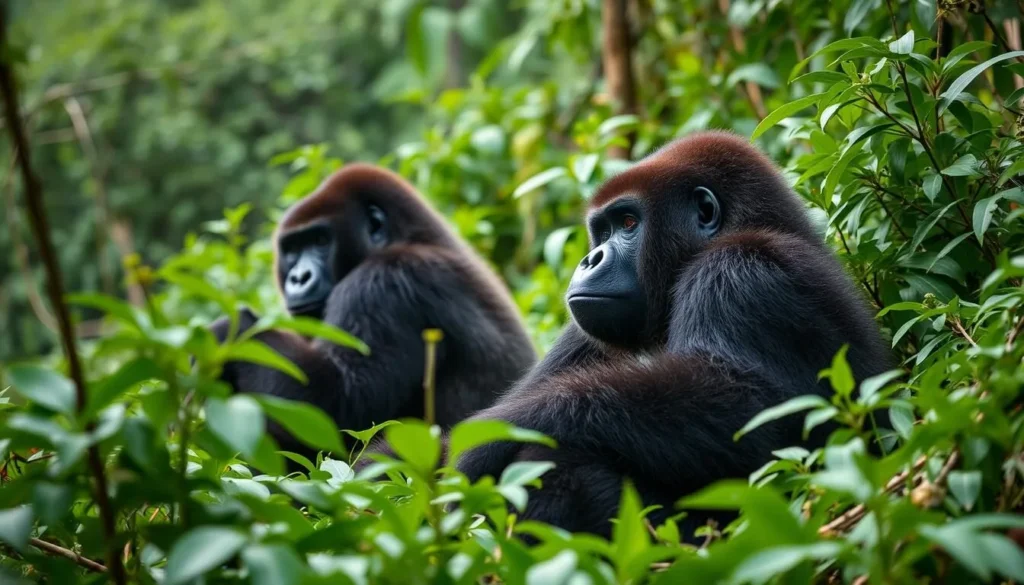
Practical Travel Information for Visiting Bunia
To ensure a hassle-free trip to Bunia, it’s vital to be informed about the practical travel information. As you prepare for your journey to this vibrant city in the Democratic Republic of Congo, understanding the essentials of accommodation, transportation, safety, and visa requirements will make your travel experience smoother.
Accommodation Options
Bunia offers a range of accommodation options to suit different budgets and preferences. From luxury hotels to budget-friendly guesthouses, you can choose a place that fits your needs. Many hotels are located in the city center, providing easy access to local attractions and amenities. When selecting your accommodation, consider factors such as security, cleanliness, and proximity to public transportation.
Some hotels also offer additional services such as guided tours, restaurant facilities, and currency exchange. Booking in advance is recommended, especially during peak travel seasons, to ensure availability.
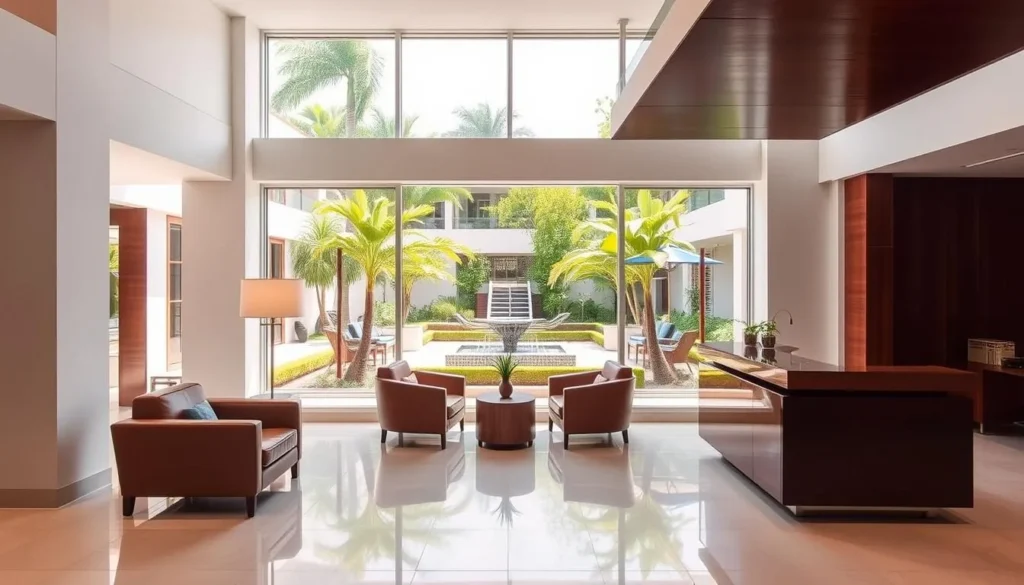
Transportation Within and Around Bunia
Getting around Bunia is relatively straightforward, with various transportation options available. Taxis and motorcycle taxis (locally known as “boda-boda”) are common modes of transport within the city. For longer distances or to explore surrounding areas, consider renting a car or hiring a private driver. Bunia is also accessible by air, with flights connecting to major cities in the Democratic Republic of Congo.
When traveling within the city, be sure to agree on the fare before starting your journey. For intercity travel, bus services are available, offering a more economical option, though the comfort level may vary.
Safety Tips and Health Precautions
As with traveling to any new destination, taking certain precautions can enhance your safety and health. Be mindful of your belongings, especially in crowded areas, and avoid displaying signs of wealth. Stay informed about local conditions and follow the advice of local authorities or your government’s travel advisory.
Health-wise, ensure you have all necessary vaccinations before traveling to the Democratic Republic of Congo. Malaria prophylaxis is also recommended, as the region is prone to malaria outbreaks. Drinking bottled or filtered water and avoiding undercooked food can help prevent gastrointestinal issues.
Visa Requirements and Documentation
Traveling to Bunia requires appropriate documentation, including a valid visa for the Democratic Republic of Congo. The type of visa you need depends on the purpose of your visit, whether it’s for tourism, business, or research. Ensure your passport is valid for at least six months beyond your planned departure date and has sufficient blank pages for visa stamps.
The application process typically involves submitting your passport, a completed application form, and supporting documents such as proof of financial means and a letter of invitation. Processing times can vary, so it’s advisable to apply well in advance of your travel dates.
- Check the current visa requirements and application procedures.
- Gather all necessary documentation, including a valid passport and proof of financial means.
- Apply for the appropriate visa category based on your travel purpose.
By being well-prepared and informed, you can enjoy a fulfilling and stress-free trip to Bunia, immersing yourself in the rich cultural heritage and natural beauty of this captivating region in the Democratic Republic of Congo.
Conclusion: Embracing the Authentic Congolese Experience in Bunia
In Bunia, the Democratic Republic of Congo, every moment is an opportunity to immerse yourself in the local culture and stunning natural beauty. As you explore this captivating destination, you’ll discover a unique blend of outdoor adventures, cultural experiences, and historical explorations that make Bunia a rewarding travel experience.
The diverse activities available to visitors in Bunia range from wildlife encounters on Lake Albert and in Parc Naturel de la Rwindi to cultural immersion through traditional dance performances and local market visits. Whether you’re hiking to hilltop views, participating in community festivals, or simply interacting with the friendly local people, Bunia offers a depth of experience that’s hard to find in more touristed destinations.
One of the special characteristics of Bunia is its ability to connect travelers with the local way of life. By engaging with the community, visitors can gain a deeper understanding of the Democratic Republic of Congo’s rich cultural heritage and the resilience of its people. While visiting Bunia can come with its challenges, the rewards are significant, offering insights not just into the Republic of Congo but into universal aspects of human culture and community.
As you plan your trip to Bunia, it’s essential to adopt responsible travel practices that respect local communities and contribute positively to the region’s development. By doing so, you’ll not only create meaningful memories but also play a part in fostering sustainable travel practices in the Democratic Republic.
In conclusion, Bunia, with its unique blend of nature, culture, and authentic experiences, stands out as a compelling destination in the Democratic Republic of Congo. As you reflect on your journey, you’ll find that the experience of Bunia leaves a lasting impression, enriching your understanding of the world and its diverse people and places.
The above is subject to change.
Check back often to TRAVEL.COM for the latest travel tips and deals.
